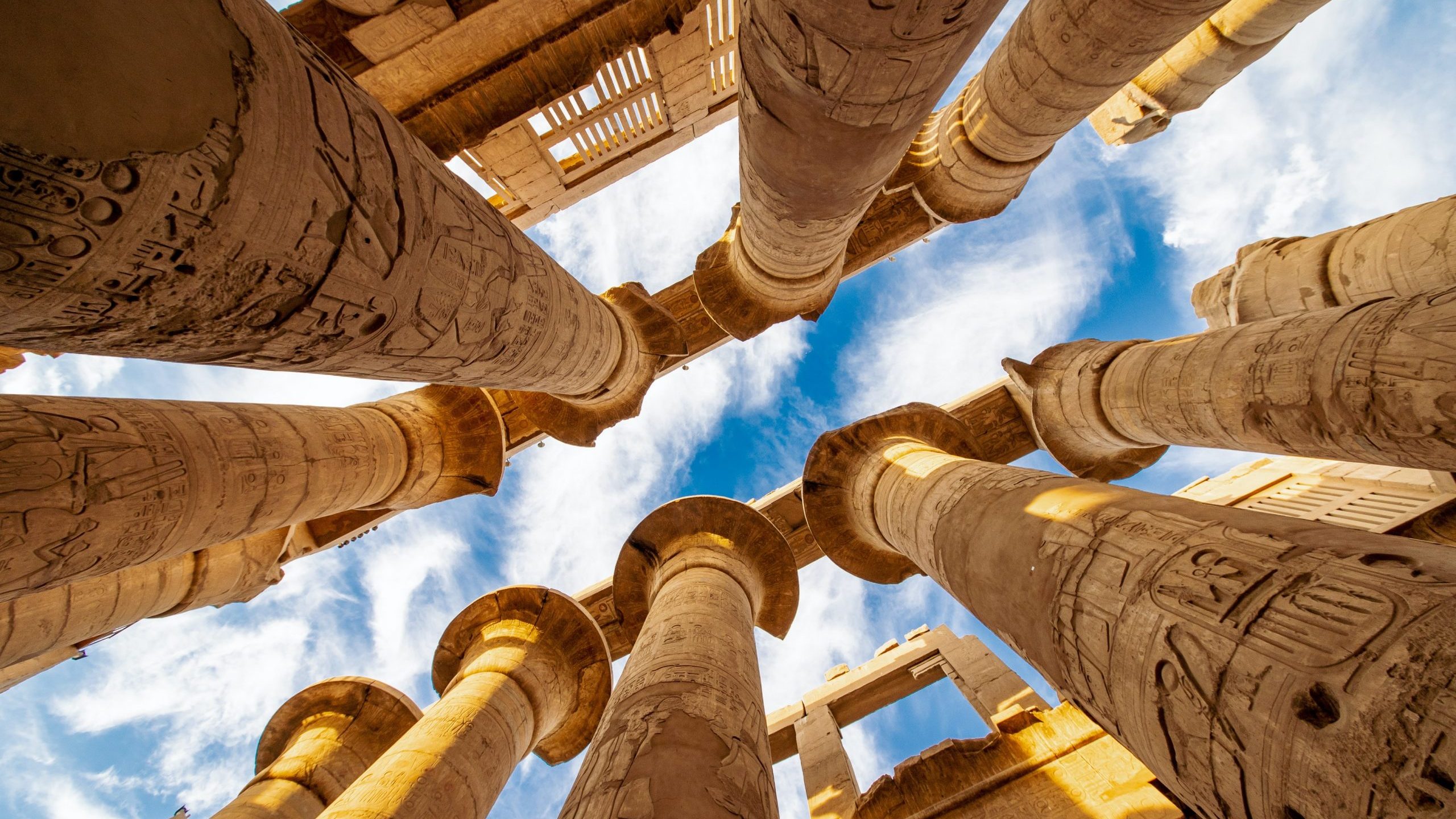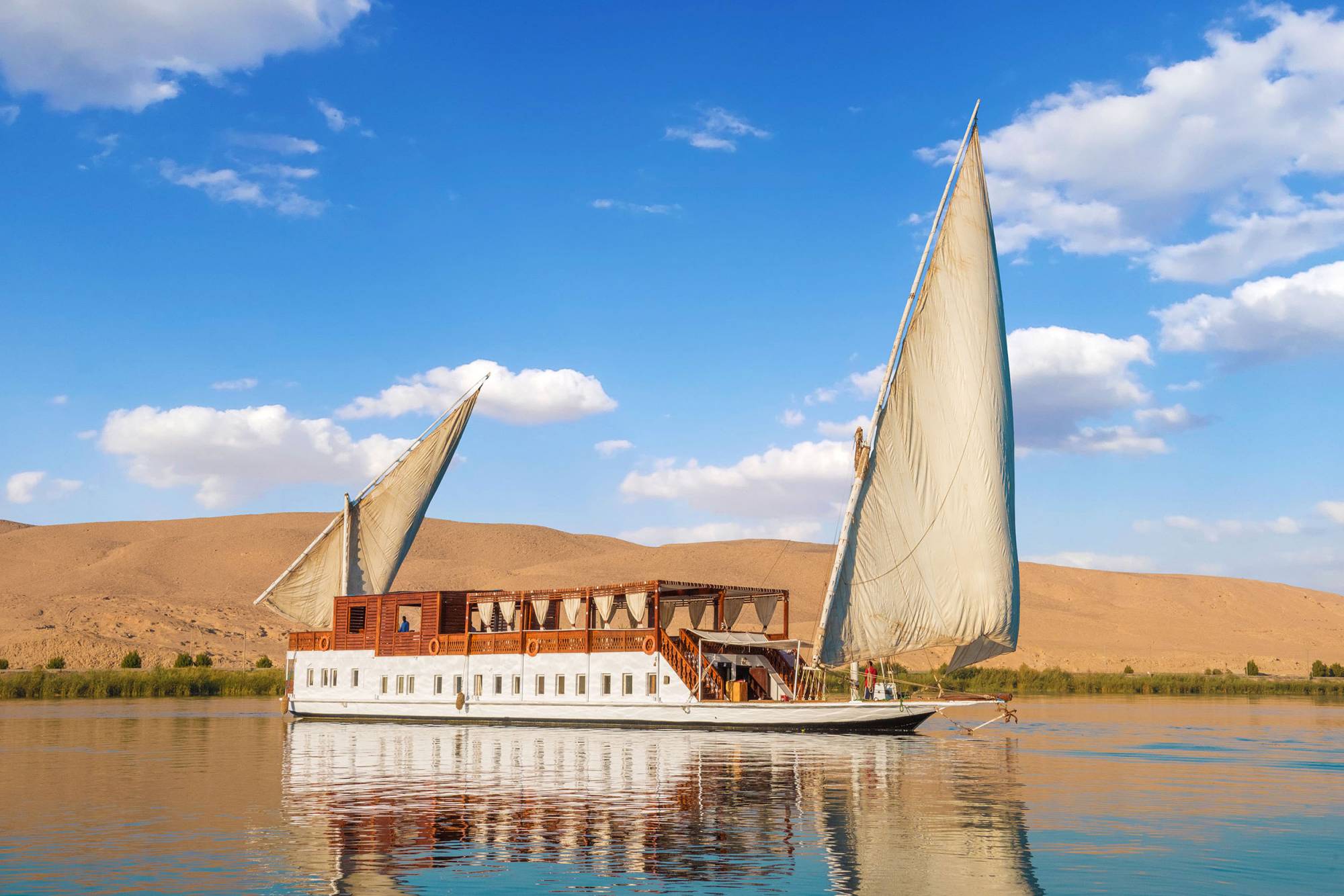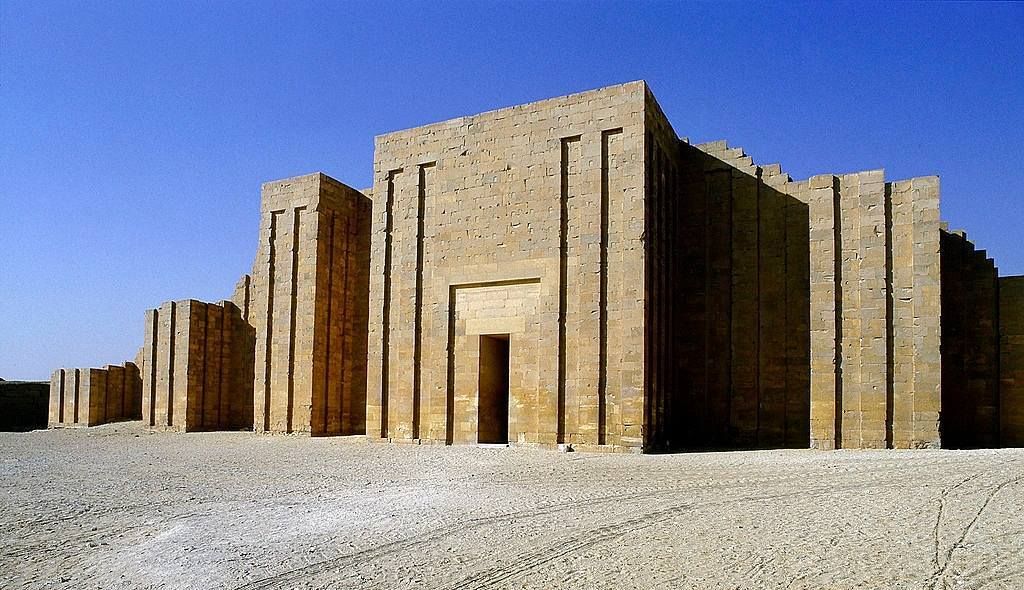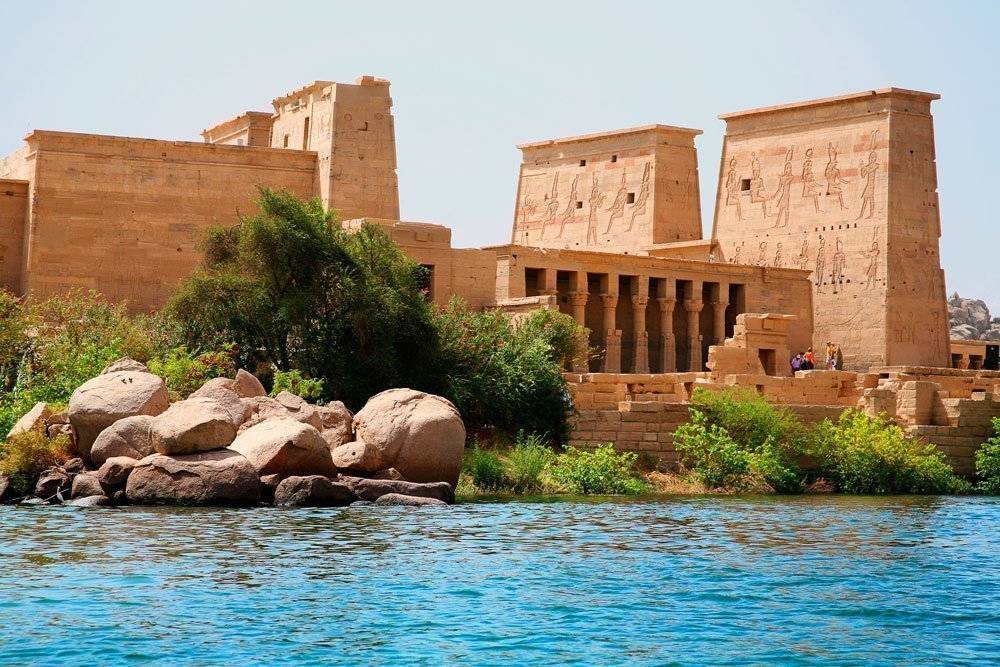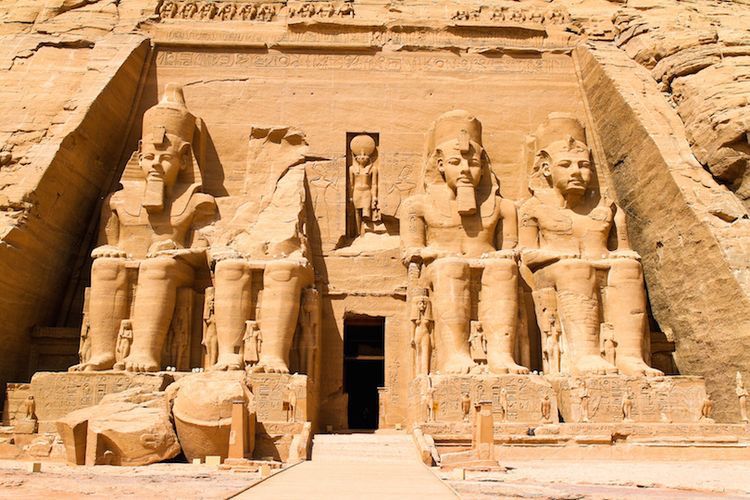Egypt in Depth 11 Days
Day 1: Arrival & overnight in Cairo
The arrival in Cairo International Airport and meet with the tour coordinator and driver. They will help you navigate your way through the airport and escort you to your hotel. Once at the hotel, the tour coordinator will provide details regarding Day 2 Excursions. You will spend the night in the hotel and awake for a day full of adventure.
Day 2: Pyramids, Saqqara and Serapeum
After breakfast, you will be met by the Egyptologist who will provide your full day of touring. The adventure begins west of the Nile River in a town called Giza. It is here you will witness Egypt’s most visited attractions—the Pyramids of Giza and the Great Sphinx. They were built for three kings of the Fourth Dynasty. The Pyramids were designed to be the tombs of Khufu, Khafre, and Menkaure. In addition to the three main pyramids, you will see the queens’ pyramids and the Great Sphinx.
The next stop will be the ancient city of Saqqara. It is an amazing display of how tomb and pyramid-building progressed. Saqqara is a necropolis containing burials from different dynasties. It includes both royal and nonroyal tombs, mastabas, and cemeteries. We continue to the Serapeum Saqqara where we will enter a series of tunnels to see the sarcophagi of the Apis bulls, sacred to the god Ptah.
Next is Dahshur. The structures at Dahshur pre-date the Great Pyramids and highlight the engineering progress and understanding that took place on the way from a stepped structure to a true pyramid. The royal necropolis at Dahshur comprises a two-mile field of pyramids that date back between the fourth and 12th dynasties, and although 11 structures once dotted the landscape, only two remain: The Red Pyramid and the Bent Pyramid. Nearly identical in size, these two pyramids are the third largest in the country after the two biggest at Giza. The Red Pyramid is the older of the two.
Meals included: breakfast, lunch
Day 3: Luxor
Be ready for Luxor adventure, the site of the famous Thebes and the World’s Largest Outdoor Museum. Whereas Egypt holds thirty percent of the world’s antiquities, Luxor alone holds thirty percent of Egypt’s antiquities. The importance of this city in Egypt’s history is unparalleled. Upon arrival to Luxor we will begin our day of touring the West Bank. Today we will take the time to visit several sites. One of the special sites we will visit is the Valley of the Kings. After pyramid building began to wane, the kings still needed a final resting place to preserve themselves and store all their treasures. The Valley of the Kings houses nearly all the tombs for the kings of the 18th, 19th, and 20th dynasties. It was designed to help hide the burial places of the kings to prevent looting. One of the most famous tombs here is the tomb of Tutankhamen. We will have the opportunity to explore some of the tombs. Next, we move to the Mortuary Temple of Hatshepsut. Hatshepsut was the wife to Thutmose II but became pharaoh after he died. This mortuary temple was modeled after Mentuhotep’s but at a much larger scale. We will explore this beautiful temple which is set into the cliffs at Deir el-Bahari. As we continue our sightseeing, we will move to Deir El Medina, which is the ancient village of the craftsmen of the Valley of the Kings. Our last site to visit will be the Colossi of Memnon where you will see two (nearly 60 feet tall) seated statues of Amenhotep III. These statues were on the entrance to Amenhotep’s mortuary temple.
Later in the afternoon, you will be picked up by your horse carriage and driver for a little adventure city tour in Luxor.
As our day concludes, we will return to your Luxor hotel for overnight.
Meals included: breakfast, lunch
Day 4: Karnak & Luxor temples
Today our tour will be the East Bank. The Karnak temple, also known as the Temple of Amun-Ra, honored not only Amun-Ra but Osiris, Montu, Isis, Ptah, and other Ancient Egyptian Gods. The area of Karnak Temple is around 200 acres, so it is immense. After Karnak, we will begin our trip to the Luxor temple. At one time there were sphinxes that lined a path from Karnak to Luxor, but it is not fully excavated. You will, however see a portion of the sphinx as it leads to the Luxor temple. Luxor temple is one of the most intact temples, so you will see many interesting statues, hieroglyphs, and rooms.
At the conclusion of this fun tour, you board your Dahabiya boat, your home for 4 nights and set sail to Esna. Overnight near El Hegz Island.
Meals included: breakfast, lunch, dinner
Day 5: El Kab & Edfu
Early morning breakfast while sailing to El Kab. Visit the city of El Kab, explore the unknown city, discover the ancient walls, the temple and the rock -cut tombs from the New Kingdom.
Welcome to the Edfu temple. Located on the Nile River between Luxor and Aswan, the Edfu temple, also known as the Temple of Horus, is the tallest and best-preserved temple in Egypt. This temple was designed to honor the divine birth of Horus and the pharaoh. We will take some time to explore this temple before we return to the Dahabiya and set sail towards Sheikh Rehan Island where we enjoy dinner in the magic nature of the Nile.
Meals included: breakfast, lunch, dinner
Day 6: Gabal El Selsela
Enjoy a unique breakfast and sailing day towards Gebel El Silsila. After lunch we discover the old pharaonic quarries of Silsila with unknown cut rock temple of Hormoheb and enjoy the breathtaking view from the top of the mountain.
We dock at Al Bashir Island for BBQ dinner and overnight.
Meals included: breakfast, lunch, dinner
Day 7: Kom-Ombo
an unusual double temple built for the falcon god Horus and the crocodile god Sobek. Kom Ombo also contains an engraving which is thought to depict the first use of medical and surgical instruments. Once we complete our tour of this fascinating place, we will board the Dahabiya and spend the rest of the day sailing to Aswan.
Meals included: breakfast, lunch, dinner
Day 8: Abu Simble
After our breakfast on the boat, we will begin our trip to Abu Simbel from Aswan. Abu Simbel is not only an amazing site built for Ramses II and his wife Nefertari, but it also presents the amazing feat of ingenuity. In the 1960s the Egyptian government began construction on Aswan High Dam. Its purpose was to prevent the annual flooding of the Nile River and to bring electricity to all people of Egypt. The trouble with the High Dam was it would permanently flood many of the antiquities. As a result, massive projects were begun to help preserve these sites. Abu Simbel was one of them. Over the course of several years, Abu Simbel was cut apart and reconstructed on a higher plane, so visitors would still be able to stand in awe of ancient Egyptian ingenuity. Today our guide will take us through both the Great Temple of Ramses II and the Small Temple of Nefertari as we see just how incredible the temples are. Once Abu Simbel tour has been completed, we will be back to Aswan, and later this afternoon once all your tours have been completed for the day, you will board a little motorboat for a relaxing boat ride through Aswan. You will have the opportunity to not only enjoy the scenery but also tour inside one of the Nubian villages.
Meals included: breakfast, lunch
Day 9: Philae Temple & High Dam
Along with our visit to the High Dam, we will also travel to the Philae temple, one dedicated to Isis, the wife of Osiris and mother to Horus. It, too, was moved from its original location to one that was free from flooding. To get to the Philae temple you will take a water taxi.
Our next stop will be to the Aswan airport as we take flight back to Cairo.
Meals included: breakfast, lunch
Day 10: Cairo
Today we visit Coptic Cairo where we will have the opportunity to see many Coptic Churches and their influences on Egypt. In addition, we will visit the Ben Ezra synagogue, which is believed to be the site where baby Moses was drawn out of the water.
Our next visit will be to the National Museum of Egyptian Civilization (NMEC). This new museum opened its doors to visitors on Apr 4, 2021.
Dedicated to the ancient Egyptian civilization, the NMEC is the first museum in the Arab world to provide a general overview of all historical periods encompassing Egypt. Its focus is to provide insight into the interactions of the Egyptian people with their native land throughout history. It provides a center full of cultural, educational, recreational, and research opportunities for international visitors and scholars. And most importantly, the NMEC is the home to twenty-two remarkably preserved ancient pharaohs and queens.
Meals included: breakfast, lunch
Last Day: Farewell
Today will be the final day of our tour of the magical Egypt, and we will take you back to Cairo International Airport to catch your flight .Thank you for spending the time with us.

